Sustainability and a Circular Economy
A circular economy is defined as being based on principles of using renewable resources, designing out waste and pollution, keeping products and materials in use for a longer period of time and regenerating natural systems.
A desire for complete transparency on consumer products has challenged every brand and manufacturer to rethink their approach to business and best practice. This includes their material choices - the fibres and dyes selected to create products, how these materials are produced, where they are sourced and whether they are traceable. As artisans, (knitters, crocheters, spinners and weavers) we get to make these choices from the very beginning of the project creation through until completion as we choose the products we will use to make the garments we wear and the items we fill our homes with.
In particular wool has long been accepted as an environmentally friendly fibre choice with a number of benefits, such as being 100% natural, renewable and biodegradable. It is thermo-regulating, easy to care for, and can be repaired and enjoyed for years and passed down to future generations.
Circularity economy and wool
Slow fashion and circular design practices might be new terminology but they are age old principals that are re-emerging in our modern world as people become more conscious of our carbon footprint and global sustainability. The natural fibre textile industry uses regenerative materials, keeps garments in use and provides pathways for reuse, recycling and biodegradation at end-of-life. When we as fibre artists take days, weeks and sometimes even months to create a new garment it is a piece of clothing that can be passed on with love multiple times and then eventually unraveled to reuse the yarn or can be added to compost to breakdown and nourish the soil, provided our yarn choices are from sustainable yarn and organic dyes.
At Natural Fibre Arts we focus on transparency, from where our yarns are grown, sourced and processed through to our use of organic dyes, what chemicals or products we use and our dyeing process.
Wool is the original eco fibre
100% Natural, renewable and biodegradable
No other fibre, natural or man-made, can match all of wool’s naturally inherent benefits.
Less energy and water than other fibres
Wool uses 18% less energy than polyester and nearly 70% less water than cotton to manufacture enough for 100 sweaters.
No microplastics, unlike synthetics
Wool is 100% biodegradable so does not contribute to microplastic pollution in our oceans or on our land.
Wool is part of the natural carbon cycle
Many textiles and fibres are made from carbon-based products, but only some, such as wool, are made from renewable atmospheric carbon. When disposed of, wool acts like a fertiliser by slowly releasing valuable nutrients and carbon back into the soil.
By comparison, the carbon in major synthetic apparel fibres, such as polyester or acrylic, is extracted from fossil fuels, de-sequestering carbon.
Wool and greenhouse gas
In Australia, significant research is under way to better understand and mitigate methane. At the farm level, emissions can be offset by changing pasture species, improving soil management to increase carbon storage, and via tree planting.
Life Cycle Assessments of wool
Natural fibres like wool and cotton are grown on farms where the resources needed to create the fibre can be readily measured and accounted such as the amount of land, water and energy.
The basic nature of sheep is that the wool grows back every year. Good animal welfare includes the shearing of sheep to keep them healthy and happy. Sheep graze thereby capturing carbon stored in grasses and utilize it to grow their fleece. This natural recurring process means that sheep wool is about 50% recycled carbon.
More and more farmers are becoming aware of the need for sustainable practices, soil regeneration and carbon storage. Sheep are proven to be a positive contributor to regenerative farming models.
As part of the lifecycle of wool we know that consumers wash wool clothing less frequently than other fibre types, saving water, energy and detergents in the process. Surveys show people are much more likely to hand down or donate wool clothing, where it can be either worn and loved again or recycled to create new yarn and fabric. Finally when the garment or fibre is exhausted it readily biodegrades, releasing its nutrients to the soil to be used again. Our use of Greener Shades Organic Dyes is also biogegradable and earth friendly.
